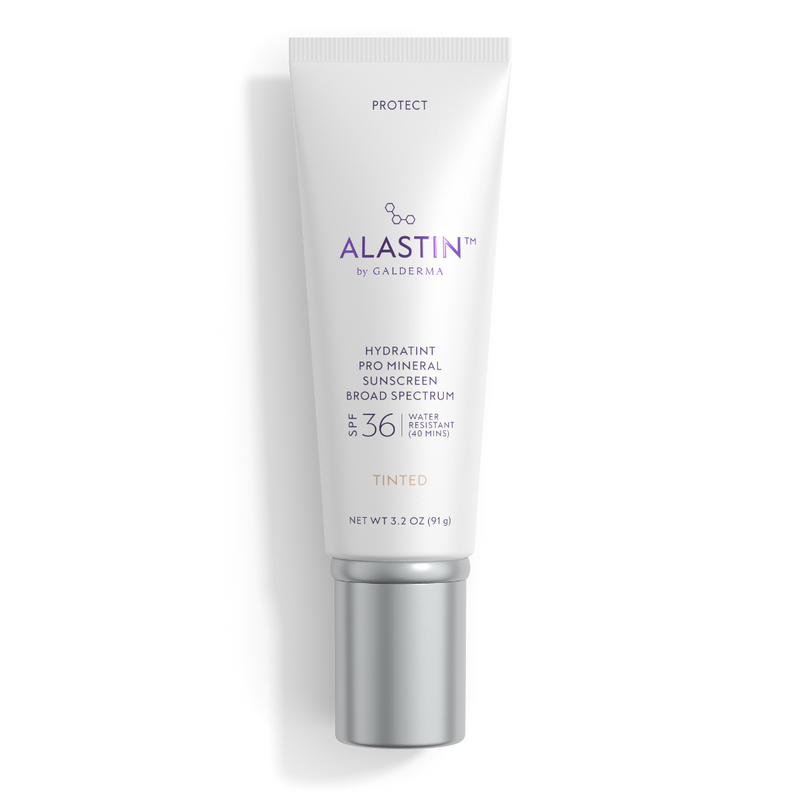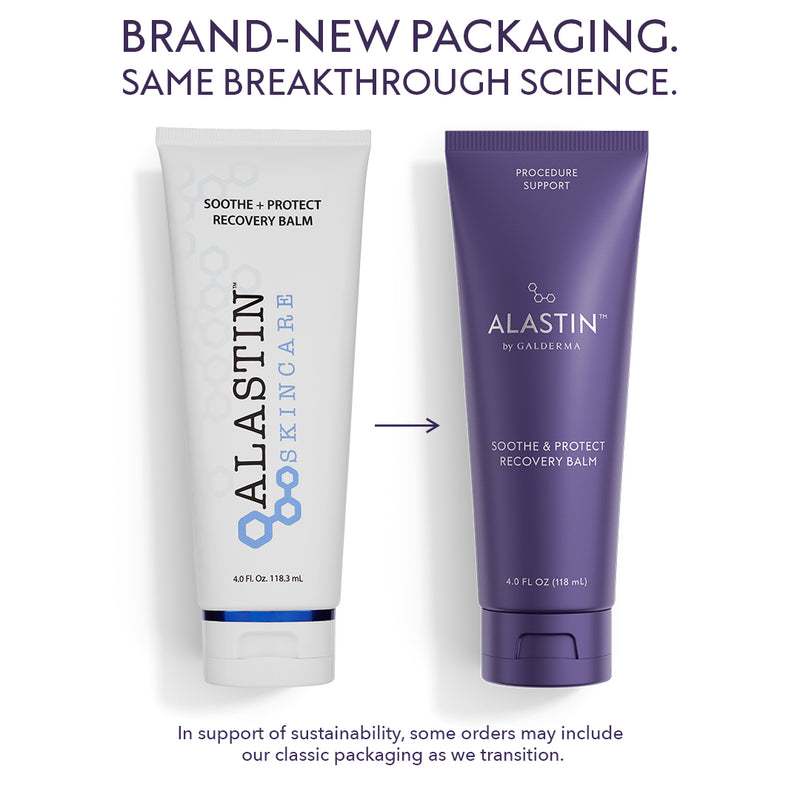You have no items in your bag
4 Tips for Chemical Peel Aftercare

The aftercare of a chemical peel is just as important as the peel itself. Chemical peels are all about keeping your skin bright, smooth, and rejuvenated. Chemical peels offer a variety of benefits for your skin, but you have to properly care for your skin before and after your peel to achieve optimal results.
You’ll leave your treatment feeling fresh and relaxed, but just because you’ve left the skincare specialist’s office, doesn’t mean that the skin-transformation is over. Chemical peel aftercare can help your skin heal and rebuild new cells. Here are four post-peel tips to support a healthy, and faster recovery.
What is a Chemical Peel?
Before we can talk about chemical peel aftercare, we have to talk about the chemical peel itself. It’s essential to know what’s happening to your skin so you can understand how to treat it.
The magical “Chemical Peel Before and After” wow moment won’t happen right away. Your skin has to go through the actual peeling phase before it gets to the youthful, rejuvenated, healthy skin phase.
First, your skincare professional will apply an even layer of acid to the skin, typically on the face, hands, or neck. Different types of chemical peels will penetrate more or less of the skin, ranging from superficial to deep chemical peels. The layers of skin will then peel off, revealing new, healthy skin forming underneath, with fewer wrinkles and less sustained damage .1
There are three kinds of chemical peels of varying penetration levels. The deeper the penetration, the more intense the effect.
So here’s what to expect after a chemical peel:2
- Superficial Peel – A superficial peel only penetrates the epidermis, the thin outer layer of skin. You’ll likely experience redness and mild irritation, then scaling,3 lasting about a week or less.
- Medium-depth Peel – This chemical peel treatment will penetrate the outer and middle layers. You can expect redness, swelling, and stinging for the first week or so, then skin may blister, crust and break, or darken into blotchy brown spots over the next week. Redness may persist for several months after the skin has entirely peeled off.
- Deep Peel – These more potent chemicals will remove the dermis (the middle layer of skin) and the damaged skin cells. You may experience redness, swelling, or a burning sensation; your doctor may apply surgical dressing and prescribe painkillers.
Deep chemical peels tend to require more intensive care, including soaking the treated skin, using ointments and pain relievers, and follow-up appointments. For mild and medium treatments, you can easily handle your chemical peel aftercare from the comfort of your home. Make sure you stock up on the right products beforehand.

Product Recommendation: If you’re undergoing a deep chemical peel, you should prepare your skin for the upcoming treatment. Our Regenerating Skin Nectar with TriHex Technology® can amplify procedure benefits by enhancing the body’s natural ability to clear our damaged collagen and elastin (two key proteins in the skin’s connective tissues). It may also reduce recovery time and preserve your results for longer.
And now, the four essential tips for chemical peel aftercare.
#1 Let It Peel Naturally
The #1 rule for post chemical peel care is hands-off.
You will undergo very sensitive skin right after. It’s safe to say that putting chemicals and acids on your skin (even mild ones) will result in some redness and irritation.
Touching your skin as it’s going through the peeling process and flaking could result in:
- Infections – The skin plays a vital role in your immune system by creating a cutaneous barrier that protects you from potential pathogens and viruses.4 When this barrier is disrupted or damaged—like after a chemical peel, for example—your treated skin becomes increasingly vulnerable to infections and other conditions.5
- Breakouts – After a facial or peel, your pores are wide open. When you touch your face, any bacteria on your hands can quickly get inside and cause breakouts.6 Even if you diligently wash your hands throughout the day, the natural oils of your hands can clog your newly cleared pores and trap blemish-causing bacteria.
- Increased irritation – Your skin will likely be red and irritated as it is. The more you touch, scratch, itch, or pick at it, the angrier it’ll get. Your skin needs time to calm down before it can fully heal.
The whole point of a peel solution is to let the damaged, dead skin cells fall off (and they will!) so let your skin do its thing.
Pro tip: Keep your hands occupied with your favorite drink—a hot cup of coffee or a chilled cocktail—and a good book! That way, you won’t be tempted to touch your skin—plus, you can justify your well-deserved night (or 10) off.
#2 Light Moisturization
Moisturizer is one of the most important skincare products you’ll use after your chemical peel, but only if you’re applying the right amount. Too little and you’ll be uncomfortable; too much and you may accidentally counteract the effects of the peel (remember: you want the skin to dry up and flake off, even if it feels a bit itchy or irritating).7
Here’s a recommended moisturization routine:
- Day 1 – No or very little moisturizer
- Days 2-3 – Minimal moisturizer, applied very gently throughout the day
- Days 4-7 – Increase moisturizer use slowly until you reach your average amount; apply a thin layer without rubbing it in too much
Remember to wash your hands thoroughly before touching your face at any stage of your post-peel care.
Product Recommendation: Your usual, everyday moisturizer may not be the best for chemical peel aftercare. Our Ultra-Nourishing Moisturizer with TriHex Technology® works with your skin to clear out damaged elastin and collagen and support your skin’s natural ability to produce new, healthy elastin and collagen.
#3 Sun Protection
Theoretically, you should apply sunscreen each and every day, chemical peel or not.
Our bodies have two main defense mechanisms against the damaging effects of the sun’s rays, both of which are impeded by peeling away layers of the skin:
- Epidermal thickening – The outer layer of the skin thickens in response to increased sun exposure to protect the inner, more vulnerable layers. A thicker epidermis can better deflect the penetration of harmful UV radiation from the sun.8 If you remove the epidermis and perhaps even layers of the dermis, you’ve lost this critical sun shield.
- Melanin synthesis – Melanin is a naturally-occurring pigment that similarly results from frequent sun exposure and subsequently protects the skin from further damage. It’s synthesized in the melanocytes, which are skin cells found mostly in the stratum basale (the inner layer of the epidermis).9 Remember, when you peel off the entire epidermis, you’re also removing these valuable melanin-producing cells.
Your skin is more vulnerable and exposed than ever when you (temporarily) remove both of these protective factors through a chemical peel. If it’s not an option to stay inside for the two weeks following your chemical peel, be sure to wear a hat, cover any exposed skin and apply sunscreen whenever you leave the house to avoid sun damage.
Choosing the right sunscreen is everything. Here’s what the doctors ordered:
- SPF 30 – This is the absolute minimum for adequate protection.10 A little more certainly won’t hurt, but it’s not required.
- Broad-spectrum – There are two unique types of ultraviolet light. Broad-spectrum protects you from both:11
- Ultraviolet A (UVA) – UVA has a longer wavelength and can penetrate the skin more deeply. Therefore, these rays play a more prominent role in aging and wrinkle formation.
- Ultraviolet B (UVB) – UVB rays are shorter and more specifically responsible for sunburns. They also play a more significant role in skin cancer development, though UVA has a hand in that, as well.
- Key active ingredients – Certain components are best-equipped to protect you from both UVA and UVB. You want to make sure your sunscreen has at least one, if not both:12
- Titanium dioxide – Blocks short-wave UVA and UVB rays; it’s oil-free, doesn’t clog up pores, and is gentle on the skin
- Zinc oxide – Extremely effective at blocking all types of UVA and UVB rays; derived from zinc, which is naturally reflective
Product Recommendation: The HydraTint Pro Mineral Broad Spectrum Sunscreen with SPF 36 has everything you need for your post-peel protection in a lightweight, mineral sunscreen with a natural tint to cover up irritated and peeling skin as you recover.
#4 Reintroduce a Gentle Skin Care Routine

Once the fresh new skin starts to regenerate, and most of the swelling, redness, and irritation is behind you, you can reintroduce a closer-to-normal skincare routine.
Still, you may not be 100% ready for some of the more intensive parts of your regimen. Here are a few crucial dos and don'ts to avoid reaggravating the mostly-healed skin:13
- DO use cool water – This is mostly for your comfort. The cold water will be more soothing and enjoyable than warm or hot water.
- DON’T over-exfoliate – The chemical peel is the exfoliant. There’s no reason to use another abrasive exfoliant on your already sensitive skin.
- DON’T scrub – As you return to your regular cleansers, toners, and other products, you should continue to apply them lightly.
Depending on the products you typically use, you may want to invest in a skincare regimen that is less harsh and abrasive to your recovering skin type.
What to Put on Your Face After Chemical Peel
In addition to our HydraTint Sunscreen and Ultra-Nourishing Moisturizer, you should introduce gentle, restorative products once your skin can tolerate them again:
- Gentle Cleanser – Our Gentle Cleanser is self-foaming, non-irritating, and rich in calming antioxidants. This will keep your face clean of impurities without relying on harsh products.
- Restorative Skin Complex with TriHex Technology® – As part of our Restore and Renew line, Restorative Skin Complex boosts the effects of your chemical peel and aids in recovery. It can help clear out damaged collagen and elastin, restore volume to thin skin, and maintain your skin’s brightness post-peel.
Proper Peel Recovery Thanks to ALASTIN
If you’re treating yourself to a chemical peel procedure, you must care about the look and health of your skin. Meticulous aftercare is a great first step, but don’t let it stop there.
You can introduce an entire line of nourishing skincare products into your daily life—chemical peel notwithstanding. Browse our products online today or shop through a recommended skincare professional near you!
Sources:
1. Gotter, Ana. “What You Should Know About Chemical Peels.” Edited by Cynthia Cobb, Healthline, 18 Sept. 2018, www.healthline.com/health/chemical-peels.
2. Mayo Clinic Staff. “Chemical Peel.” Mayo Clinic, Mayo Foundation for Medical Education and Research, 27 Aug. 2020, www.mayoclinic.org/tests-procedures/chemical-peel/about/pac-20393473
3. “Chemical Peels and Your Skin.” Edited by Debra Jaliman, WebMD, WebMD, 27 Aug. 2019, www.webmd.com/beauty/cosmetic-procedures-chemical-peel-treatments.
4.Eyerich, Stefanie, et al. “Cutaneous Barriers and Skin Immunity: Differentiating A Connected Network.” Trends in Immunology, vol. 39, no. 4, 15 Mar. 2018, pp. 315–327., doi:10.1016/j.it.2018.02.004. https://www.cell.com/trends/immunology/references/S1471-4906(18)30028-0
5. Anitha, B. “Prevention of complications in chemical peeling.” Journal of cutaneous and aesthetic surgery vol. 3,3 (2010): 186-8. doi:10.4103/0974-2077.74500. https://www.ncbi.nlm.nih.gov/pmc/articles/PMC3047741/
6. Yarbrough, Jessica. “Are Facials Supposed to Make Things Worse Before They Get Better?” SELF, 17 Jan. 2019, www.self.com/story/skin-results-from-facials.
7. “The Do's and Don'ts of Taking Care of Your Skin After a Chemical Peel.” Renaissance Plastic Surgery, 2 Mar. 2017, www.rpsplasticsurgery.com/the-dos-and-donts-of-taking-care-of-your-skin-after-a-chemical-peel/.
8. de Winter, Sandrine, et al. “Solar-Simulated Skin Adaptation and Its Effect on Subsequent UV-Induced Epidermal DNA Damage.” Journal of Investigative Dermatology, vol. 117, no. 3, Sept. 2001, pp. 678–682., doi:10.1046/j.0022-202x.2001.01478.x. https://www.sciencedirect.com/science/article/pii/S0022202X1541365X
9. Miller, Margaret A., and James F. Zachary. “Mechanisms and Morphology of Cellular Injury, Adaptation, and Death.” Pathologic Basis of Veterinary Disease, 2017, pp. 2–43., doi:10.1016/b978-0-323-35775-3.00001-1. https://www.sciencedirect.com/topics/neuroscience/melanin
10. Dermalure Admin. “Sunscreen After Chemical Peels.” Dermalure, 28 May 2015, www.dermalure.com/sunscreen-after-chemical-peels/.
11. “What Is the Difference between UVA and UVB Rays?” University of Iowa Hospitals & Clinics, University of Iowa Health Care, Apr. 2018, www.uihc.org/health-topics/what-difference-between-uva-and-uvb-rays.
12. “Zinc Oxide & Titanium Dioxide Sunscreen.” Colorescience, 19 June 2018, www.colorescience.com/blogs/learn/zinc-oxide-titanium-dioxide.
13. “How to Care for Your Skin after a Peel.” Dermalogica, Dermalogica, 24 July 2020, www.dermalogica.com/blogs/living-skin/how-to-care-for-your-skin-after-a-peel.

$84.00
$258.00











